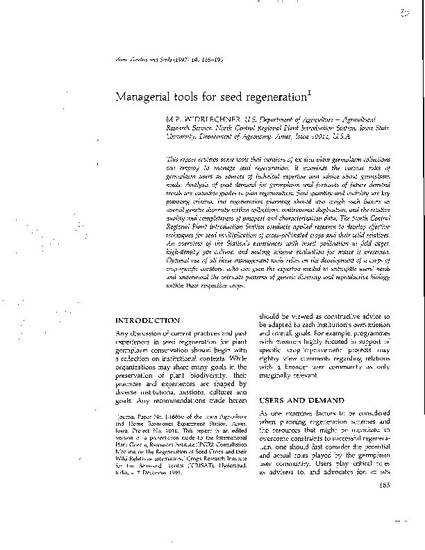
This report reviews some tools that curators of ex situ plant germplasm collections can employ to manage seed regeneration. It examines the various roles of germplasm users as sources of technical expertise and advice about germplasm needs. Analysis of past demand for germplasm and forecasts of future demand trends are valuable guides to plan regeneration. Seed quantity and viability are key planning criteria, but regeneration planning should also weigh such factors as overall genetic diversity within collections, institutional duplication, and the relative quality and completeness of passport and characterization data. The North Central Regional Plant Introduction Station conducts applied research to develop effective techniques for seed multiplication of cross-pollinated crops and their wild relatives. An overview of the Station's experiences with insect pollination in field cages, high-density pot culture, and mating scheme evaluation for maize is presented. Optimal use of all these management tools relies on the development of a corps of crop-specific curators, who can gain the expertise needed to anticipate users' needs and understand the intricate patterns of genetic diversity and reproductive biology within their respective crops.
Available at: http://works.bepress.com/mark_widrlechner/93/

This article is from Plant Varieties and Seeds 10 (1997): 185.